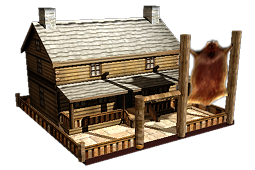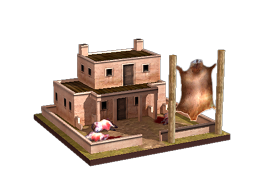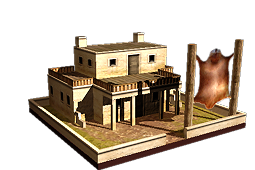Fur Exchange (ETW building)
| Fur Exchange | |||||||
|---|---|---|---|---|---|---|---|
| Category: | Fur | ||||||
| Level: | 2 | ||||||
| Turns to build: | 5 | ||||||
| Building cost: | 4500 | ||||||
| |||||||
| Requires | |||||||
| Fur Market | |||||||
| Technology | |||||||
| Joint Stock Companies | |||||||
Furs are a mark of luxury and status, as well as a practical way of keeping warm. The demand can strip areas of their native fauna.
Although the medieval sumptuary laws (that defined who could wear what) are largely ignored in Europe, the wearing of fur is often restricted to royalty and other high-status individuals: the British House of Lords sets out regulations for the fur trimming on peers’ robes, while furs are often reserved for warlords in the East. Lesser status furs are available to anyone with the money to spend.
In Europe, even artists benefited from the fur traders’ work: sable-hair brushes (actually made from a kind of weasel) are extremely good for watercolours, as they come to a fine point and hold paint well. Watercolour landscapes became very fashionable during the 18th Century, both to own and to paint. Painting watercolours became an accomplishment for marriageable young ladies, a delicate art to show off their sensibilities. In the process, watercolours became an important part of tourism, as they allowed the rich to record what they had seen on their travels.



